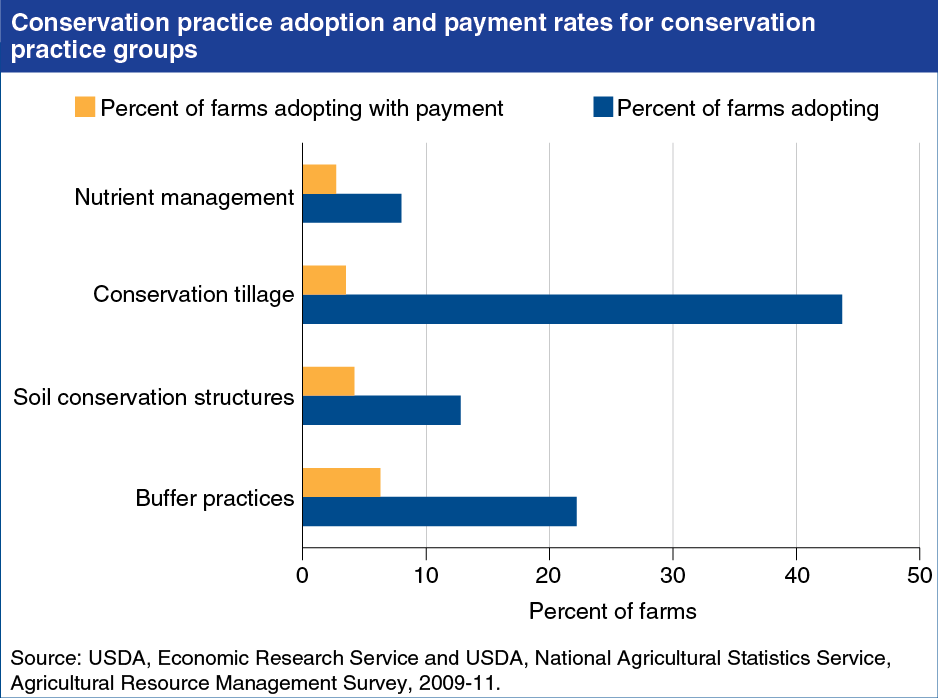Many factors, including conservation payments, influence the adoption of conservation practices
- by Roger Claassen
- 7/29/2014

The Federal Government spent more than $6 billion in fiscal 2013 on conservation payments to encourage the adoption of practices addressing environmental and resource conservation goals, but such payments lead to additional improvement in environmental quality only if those receiving them adopted conservation practices that they would not have adopted without the payment. Some farmers have adopted specific conservation practices without receiving payments because doing so reduces production costs or preserves the long-term productivity of their farmland (e.g., conservation tillage). Many other farmers have not adopted conservation practices, presumably because the cost of doing so exceeds expected onfarm benefits, the value of which can vary based on many factors—soil, climate, topography, crop/livestock mix, producer management skills, and risk aversion. Since the value of onfarm benefits can vary widely across practices and farms, identifying which farmers will adopt a conservation practice only if they receive a payment is not straightforward, but research indicates that the likelihood a payment will result in additional environmental benefits increases as the implementation cost of the conservation practice increases and its impact on farm profitability declines. This chart is found in the ERS report, Additionality in U.S. Agricultural Conservation and Regulatory Offset Programs, ERR-170, July 2014.


